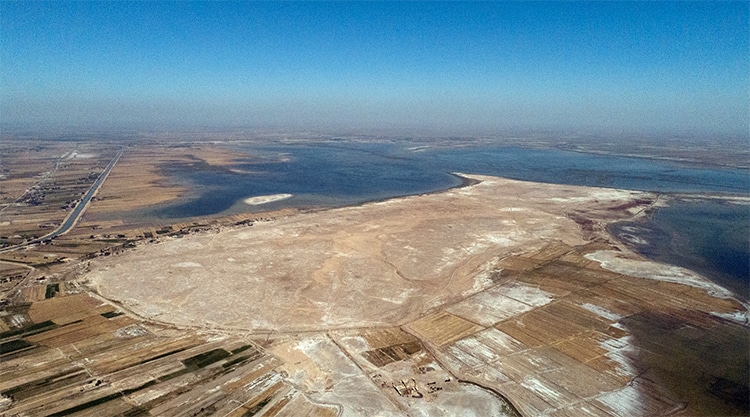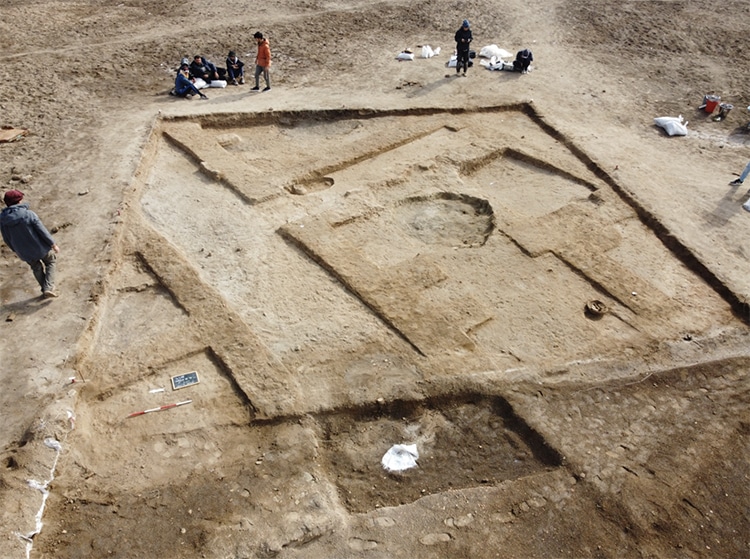
The closest trench shows the tavern with a clay refrigerator called a “zeer,” an oven, and benches. (Photo: Lagash Archaeological Project)
After a hard day’s work, ancient people liked to unwind at the pub just like modern folks. At least, that is what new findings on the important archeological site of Lagash in Iraq indicate. As recently announced by the University of Pennsylvania, archeologists digging at the site uncovered a tavern dating to around 2700 B.C.E. The find is complete with an oven, benches, a clay refrigerator known as a zeer, and bowls with food remnants. These findings can tell historians and archeologists a lot about daily life in a busy, ancient industrial center.
Lagash is one of the largest archeological sites in southern Mesopotamia. The city dates to the Early Dynastic period from 2900 to 2300 B.C.E. The urban center was part of a trio of cities that formed a powerful polity. Lagash was situated near fertile lands, but archeologists also believe it was an important center of craftsmen and industry. Excavations have uncovered ceramic kilns and trenches where wet clay was stored. Tables and benches nearby suggested a workroom. These workers may have lived in the domestic quarters also discovered on the site, which contained a kitchen, bowls with food, a grinding stone, and a toilet.
A surprising feature of the neighborhood was the tavern. Benches for guests, a zeer, an oven, and remnants of storage vessels containing food all suggest a thriving working-class watering hole. “It’s a public eating space dating to somewhere around 2700 BCE,” says Professor Holly Pittman, curator of the Penn Museum’s Near East Section and the Lagash project director. “It’s partially open air, partially kitchen area.”
To uncover the tavern, the team employed modern technologies. Using drone imagery and magnetometry analysis (testing the magnetism of objects under the soil), they could determine where best to dig. They then removed the dirt in microstratigraphic layers—very thin slices with surgical precision. Pittman described it in a statement as “like doing very careful surgery…Just 50 centimeters down, we were able to capture all of this. We were happily astounded.”
While preserved food has been found in other ancient locales, this find reveals more about working-class life in ancient Mesopotamia. Zaid Alrawi, project manager for the Lagash project at the Penn Museum, summed it up: “As you excavate, you analyze and create a story that we hope gets closer and closer to the reality of the past.”
In a 5,000-year-old tavern at an archeological site in Iraq known as Lagash, archeologists found a clay refrigerator, benches, and storage containers of food.

The Lagash site, bottom center. (Photo: Lagash Archaeological Project)
They also found remnants of a fish meal preserved in bowls.

Rectangular trenches which held clay, which was used by craftsmen. (Photo: Lagash Archaeological Project)
h/t: [Smithsonian Magazine]
Related Articles:
Archeologists Find 24 Ancient Bronze Statues in Tuscan Spa
Man Solves 20,000-Year-Old Cave Drawings Mystery That’s Been Stumping Archeologists
Radar Technology Discovers Intricate Ancient Mayan Civilization in Northern Guatemala
Centuries-Old Ship in Perfect Condition Is Found at the Bottom of Norway’s Largest Lake
